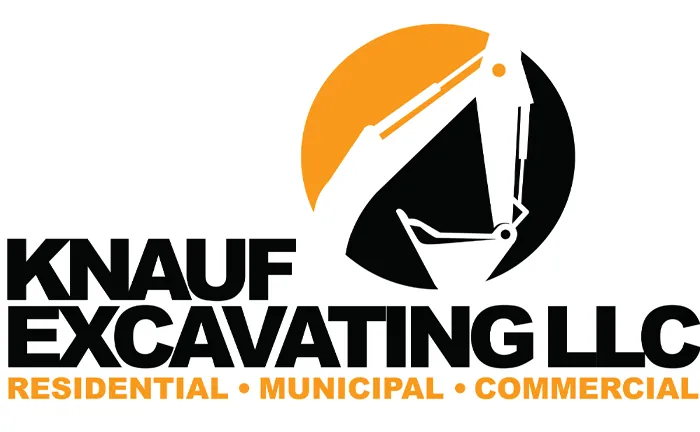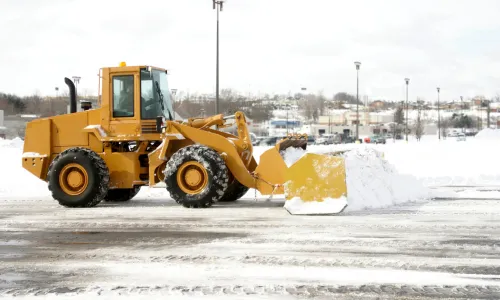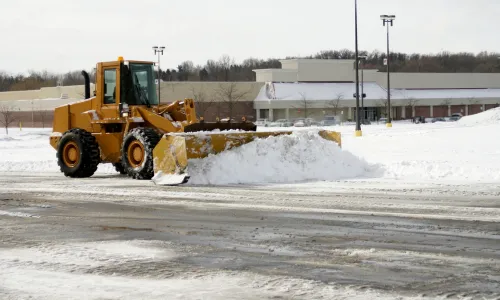
Serving Wisconsin Counties: Marathon, Oneida, Villas and Lincoln Counties
Snow Plowing Service near Marathon County, Wisconsin
Knauf Excavating LLC is Committed to superior quality and results!

AVOID COSTLY MISTAKES:
Do NOT hire an excavating contractor without first reading our free guide:
The ULTIMATE Excavation & Septic "Success Guide."

Snow Plowing Service near Marathon County Built for Real Wisconsin Winters
Snow doesn’t wait for business hours. When a clipper rolls in at midnight or a stubborn band parks over Wausau at dawn, you still need clear lanes, open parking, and safe walkways. A dependable snowplowing service near Marathon County keeps homes and workplaces accessible, limits slip hazards, and prevents costly downtime. Below, you’ll find exactly what professional snow management includes, the benefits you can expect, and a straightforward hiring process tailored to properties across Marathon County, Wisconsin—written in a plainspoken, Marcus-Sheridan style that helps you make a confident, no-nonsense choice.
How Can We Help?


What a Snow Plowing Service near Marathon County Actually Does
Professional snow management starts before the first flurries. Crews monitor forecasts, track pavement temperatures, and mobilize according to your trigger depth. During a storm, operators clear traffic aisles, break out stalls, open loading docks, and shovel entries and steps. Tight spaces get blower work; broad lots may use containment plows or push boxes to move volume quickly. De-icing follows with treated salt, sand blends, or liquid anti-icers based on temperature and surface type. After the event, touchback visits address refreeze and drifting so you aren’t dealing with surprise slick spots when temps drop again.
Benefits of Hiring Locally (Beyond Just “Pushing Snow”)
Safety, first and always. De-iced surfaces reduce slips, fender-benders, and claims—protecting people while preserving your budget.
Fewer interruptions. Reliable clearing keeps clinics on schedule, retailers open, and deliveries on time, even when totals exceed the morning forecast.
Real response times. With a standing agreement, you’re on a route. Service begins automatically at your trigger—no 4 a.m. scramble.
Cleaner edges, better piles. Correct blade angles, curb awareness, and smart stacking prevent berms that block sightlines or melt toward entrances and foundations.
Surface protection. Trained operators use shoes and calibrated de-icers to respect asphalt, concrete, pavers, and landscaping.
Budget clarity. Seasonal, per-push, and time-and-materials options let you match spend to risk tolerance and site needs.
Services Typically Included for Marathon County Properties
Residential driveways and private roads. Plowing, apron clean-out, mailbox access, and traction treatment for hills and curves.
Commercial lots. Aisle clearing, stall breakout, curbline cleanup, sidewalk crews, and early-morning openings for offices, clinics, and retail.
Industrial and logistics. Loader stacking, push boxes, haul-off coordination when piles reduce capacity, and traction management for heavy truck traffic.
Sidewalk and entry care. Hand crews for steps, ramps, and narrow walkways with concrete-friendly de-icers.
Local Factors in Marathon County, Wisconsin That Shape a Smart Plan
Storms here often bring quick hitters and mixed precipitation that creates freeze-thaw cycles. Rural addresses battle drifting along fields; in-town sites near Wausau juggle pedestrian volumes and midday refreeze. De-icer choice matters: treated salt and sand blends improve grip in colder snaps and reduce scatter waste. Drainage paths deserve attention so that meltwater runs away from entries and doesn’t refreeze at dusk. Finally, mapping snow-pile zones protects visibility and parking count, and ensures melt doesn’t push water toward buildings.
See Our Excavation & Septic Services

✔️ Commercial Excavation
✔️ Residential Excavation
✔️ Swimming Pool Excavation
✔️ Basement Digging
✔️ Basement Backfill
✔️ Shoreline Restoration
✔️ Driveway Construction
✔️ Municipal Excavating
✔️ Snow Plowing Service
✔️ Demolition
✔️ Large Pond Construction
✔️ Small Pond Construction
✔️ Dozer Work
✔️ Septic Inspections
✔️ Septic System Pumping
✔️ Septic Installs Traditional Systems
✔️ Septic Tanks - Aerobic Systems
Quality Services Launched FAST!

✔️ Septic Tanks - Plastic/Poly
✔️ Septic Tanks - Concrete
✔️ Drain Field Replacement
✔️ Forestry Mulching
✔️ Grading, Lot Clearing
✔️ Retaining Walls
✔️ Sewer Repairs
✔️ Drainage Systems
✔️ Concrete Flatwork
✔️Driveways, Sidewalk, Foundations
✔️ Foundation Repairs
✔️ Full Site Preparation
✔️ Trenching
✔️ Utilities Trenching
✔️ Grade Shed Pad
✔️ Site Construction
What Are You Waiting For?
How to Hire a Snow Plowing Service near Marathon County (Step by Step)
1) Walk the site. Note ADA routes, fire lanes, loading zones, dumpster pads, mailbox clusters, hydrants, overhead clearance, and tight corners. Highlight hazards—raised utilities, decorative curbing, uneven joints, low lighting.
2) Set your trigger and timing. Many homes choose 1–2 inches; busy facilities may require under an inch. Clarify opening times and whether you want midday pushes during long events.
3) Pick a pricing model. Seasonal provides budget stability; per-push suits occasional use; time-and-materials fits variable sites or heavy-equipment needs after blizzards.
4) Match equipment to the property. Compact trucks and blowers for tight residential layouts; loaders and containment plows for big lots and distribution yards.
5) Verify safety and training. Look for reflective gear, strobes, site maps in each truck, salt calibration records, and documented operator training.
6) Request a site map. A quality Snow Plowing Service near Marathon County will mark plow lanes, pile zones, no-go areas, priority entrances, and overflow staging for back-to-back storms.
7) Establish communication. Decide how you’ll receive storm alerts, service notifications, and completion photos. Clarify who can approve loader mobilizations or extra de-icing.
Add-Ons That Improve Results All Season
Pre-season staking. Mark curbs, drains, islands, and landscaping before the first storm to prevent plow damage at night.
Anti-icing. Pre-treating ahead of sleet or freezing drizzle can prevent bonding and reduce salt required later.
Mid-season pile relocations or haul-off. Restore parking capacity and sightlines when stacks creep into critical areas.
On-call ice checks. Sunny days plus cold nights equal black ice; scheduled inspections catch it early.
Simple Process for Hiring a Snow Plowing Service near Marathon County
Step A: Assessment. A quick visit confirms scope, hazards, timing, and equipment fit.
Step B: Proposal. You receive a written scope, trigger depths, pricing options, and a clear site map.
Step C: Prep. Staking, signage, salt bins, and emergency contacts are set before the first advisory.
Step D: Service. Crews arrive per trigger, document each pass, and share completion photos.
Step E: Review. After major events, you’ll adjust pile zones, schedule touchbacks, and refine de-icing for the next storm.
Why Professionalism Pays Through Every Storm
Skilled operators, mapped routes, tuned equipment, and responsive communication add up to fewer interruptions and safer movement. For homeowners, that means the morning commute without shoveling the apron. For businesses, it means customers and employees find open parking and clear paths even when snow keeps coming. The right Snow Plowing Service near Marathon County, Wisconsin delivers a proactive plan built around local weather patterns, traffic rhythms, drainage realities, and the unique layout of your property. The outcome is simple: predictable access, fewer accidents, better surfaces, and a winter budget you can live with—without guesswork or last-minute phone calls.
Hours: Mon-Fri 7AM-5PM
Extended hours by appointment only.
Address: 1250 W. Campus Dr. Wausau, Wisconsin 54401
All rights reserved | Client Support Area